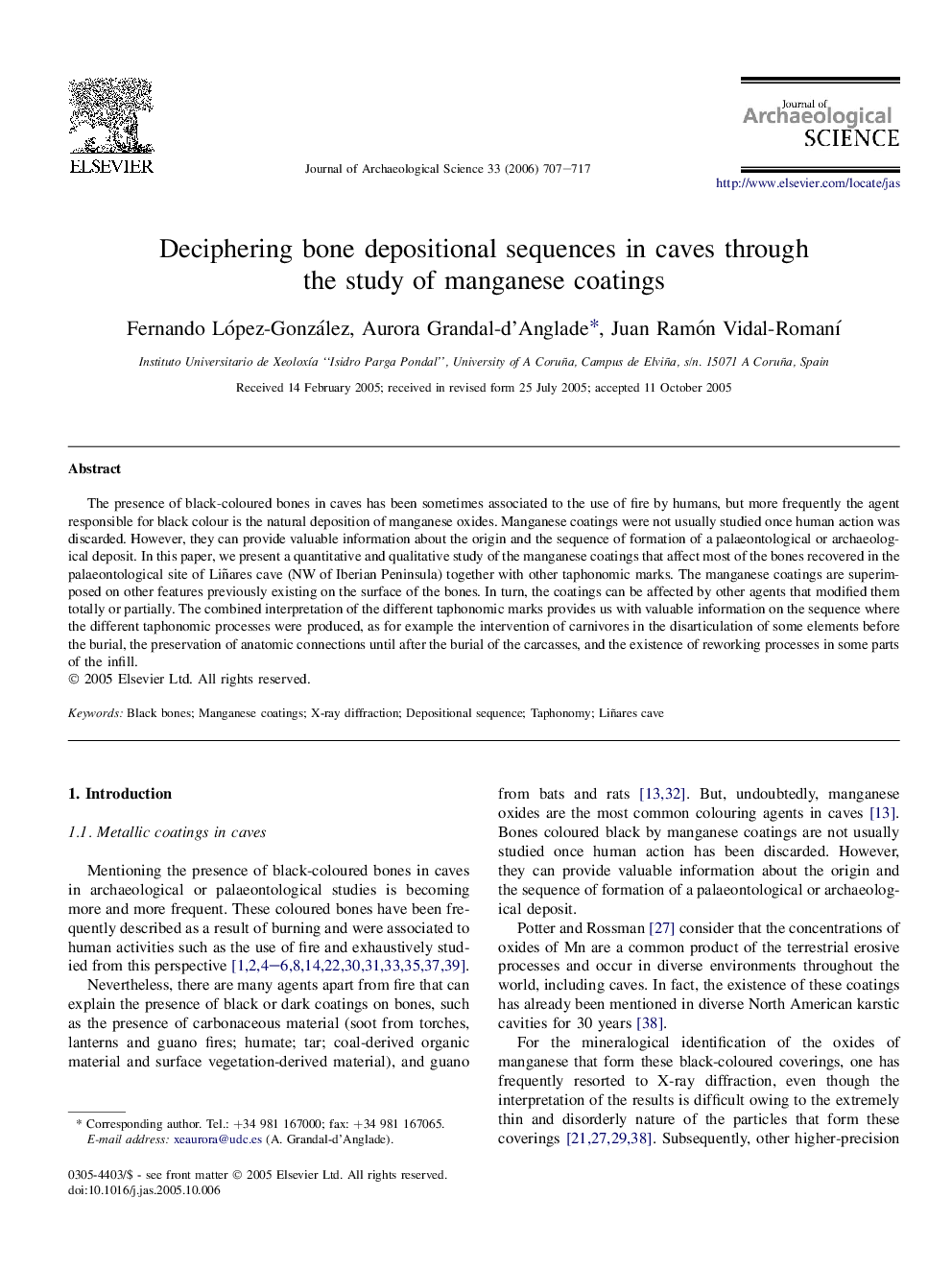| Article ID | Journal | Published Year | Pages | File Type |
|---|---|---|---|---|
| 1036695 | Journal of Archaeological Science | 2006 | 11 Pages |
The presence of black-coloured bones in caves has been sometimes associated to the use of fire by humans, but more frequently the agent responsible for black colour is the natural deposition of manganese oxides. Manganese coatings were not usually studied once human action was discarded. However, they can provide valuable information about the origin and the sequence of formation of a palaeontological or archaeological deposit. In this paper, we present a quantitative and qualitative study of the manganese coatings that affect most of the bones recovered in the palaeontological site of Liñares cave (NW of Iberian Peninsula) together with other taphonomic marks. The manganese coatings are superimposed on other features previously existing on the surface of the bones. In turn, the coatings can be affected by other agents that modified them totally or partially. The combined interpretation of the different taphonomic marks provides us with valuable information on the sequence where the different taphonomic processes were produced, as for example the intervention of carnivores in the disarticulation of some elements before the burial, the preservation of anatomic connections until after the burial of the carcasses, and the existence of reworking processes in some parts of the infill.
